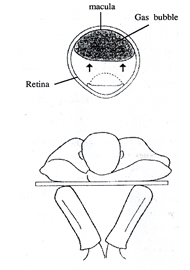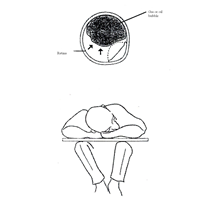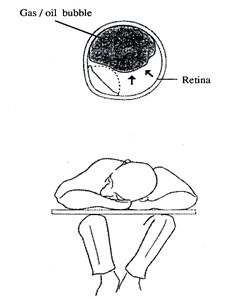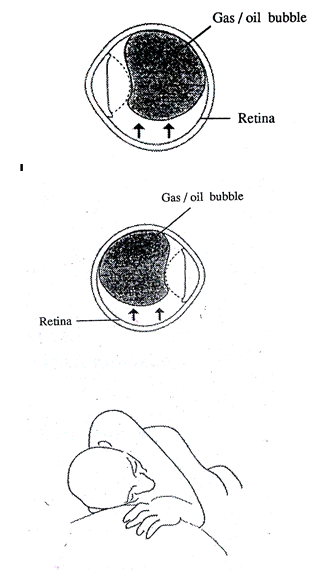- Reference Number: HEY949-2024
- Departments: Ophthalmology Department
- Last Updated: 3 June 2024
Introduction
This leaflet has been produced to give you general information about posturing following retinal surgery. Most of your questions should be answered by this leaflet. It is not intended to replace the discussion between you and the healthcare team, but may act as a starting point for discussion. If after reading this leaflet, you have any concerns or questions, please do not hesitate to discuss them with a member of the healthcare team.
What is posturing?
Posturing is the positioning of your head and upper body required after undergoing retinal surgery.
Why do I need to posture?
Posturing is the positioning of your head and upper body required after undergoing retinal surgery.
What should I do after my surgery?
- You will need to commence your posturing position as soon as possible following your operation.
- You will need to adjust your posture as instructed during the day; you can have a 10 minute break every hour.
- With gas bubble inside your eye, for the first week you will only be able to see light and dark with your eye. This is because the gas makes everything badly out of focus. Some people are able to see objects held very close to the eye. Later on, your sight will begin to return. The timing depends on the type of gas used. When the gas bubble is down to half size, you will see a horizontal line across your vision, bobbing up and down with head movement. This is where the gas meets the fluid which is gradually replacing it. It is just like a spirit level. You will have sight above this line, and blackness below it. Day by day the line will move lower down; the seeing area will get bigger, and the black area will get smaller until it is just a circle at the bottom of your vision, and then it disappears.
- You need to ensure correct posturing throughout the night.
- Continue posturing for the duration instructed by your surgeon (usually between 2 to 7 days).
- You may undertake light household activities such as dusting, washing up, reading and watching the TV, etc providing you keep your head in the required position.
- It is recommended that you do not lie flat on your back until the gas has been fully absorbed, this can be up to eight weeks and varies depending on the concentration and type of gas we have used.
- Never fly in an aeroplane until the gas bubble has been fully absorbed; this can be up to 8 weeks following surgery.
- You should not participate in activities which take place above an altitude of over 1220 metres (4,000 feet).
- If you have a medical oil called ‘Silicone oil’ in your eye you should avoid lying flat on your back whilst the oil remains in the eye. This is to reduce the risk of the oil seeping into the front part of the eye causing the eye pressure to become unstable.
- You should not go swimming for 8 weeks following your operation.
What are the correct types of posturing?
The following diagrams are to help you achieve the required position.
The ward nurses will advise you on which position(s) you need to use and the duration.
Face down posturing

Lying on the left side with cheek to the pillow
Lying with your face down but tilted to the left 45 degrees to the pillow

Lying with face down but tilted to the right 45 degrees to pillow

Images drawn by HUTH Trust Medical illustration dept
What happens afterwards?
- The oil remains in the eye for several months until the retina has healed sufficiently for it to be removed.
- The gas bubble is slowly absorbed by the body over a period of up to 8 weeks.
- If you experience any of the following problems following your return home you must contact us for further advice:
-
- Excessive pain
- Loss of vision
- Increasing redness of the eye
- Discharge from the eye
Should you require further advice on the issues contained in this leaflet, please do not hesitate to contact the Ophthalmology Department on:
Tel: 01482 816658 or tel: 01482 608788 between 08:30am to 17:00pm, Monday to Friday or Out-of-Hours on tel: 01482 604346 (Please listen to full voice message on how to access emergency out of hours service).


